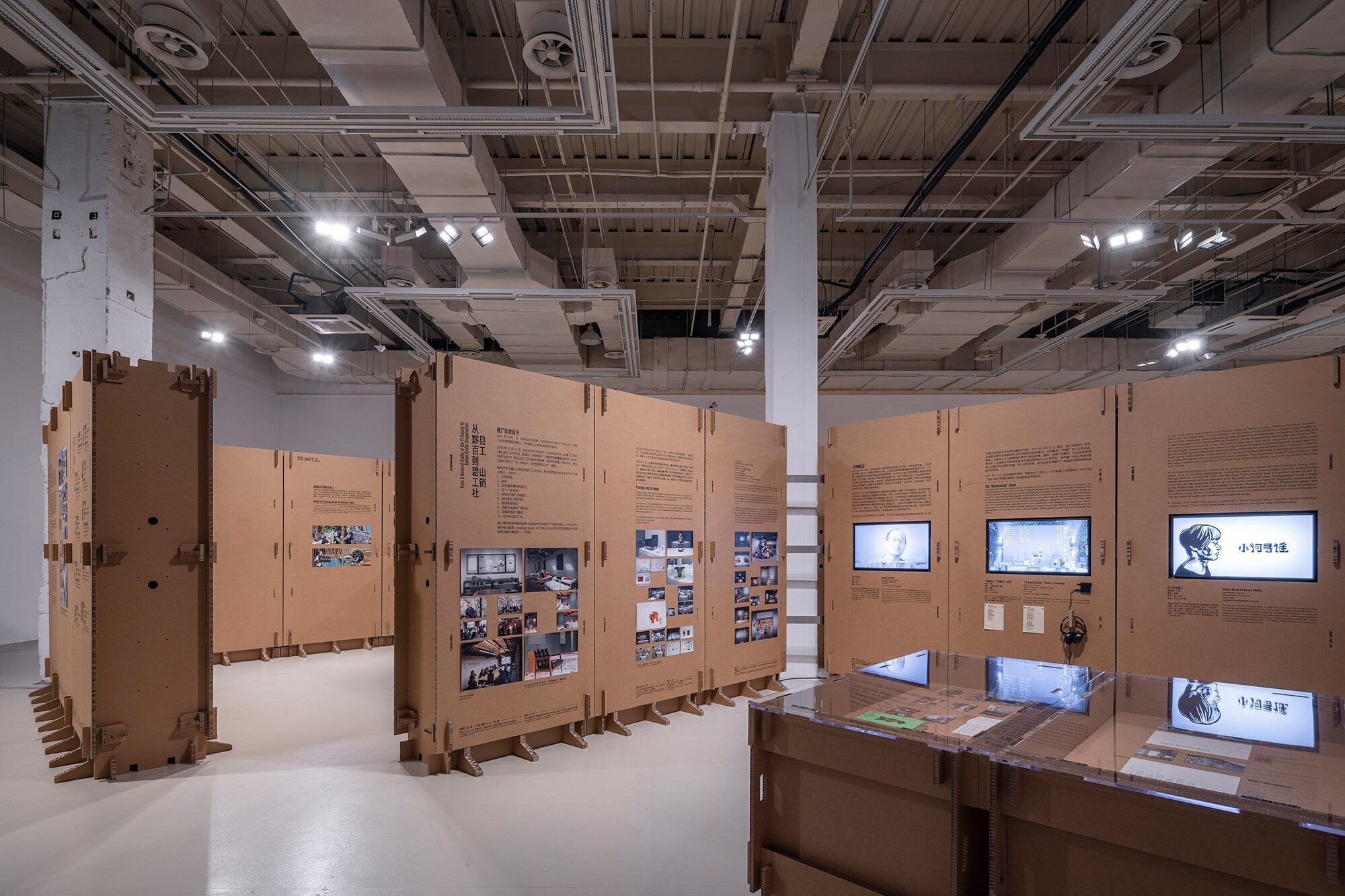Given the concept of zero waste, LUO studio has been probing sustainable practices. Conceived as a backdrop for Zuo Jing’s exhibition called Back to the Future: Breaking the Time Barrier, the vision was transformed into reality solely using cardboard.

The low density of cardboard, compared to traditional building materials, allows a shorter time for CNC cutting and processing. In less than two days, 2,566 cardboard components were generated from all 320 pieces of raw cardboard used for the exhibition. Moreover, a small team of six to seven people put together the exhibition modules on site in 2 days, establishing an efficient construction method that can be adopted by non-professionals as well.

The existing rectangular space comprises a row of concrete columns giving away a solid physical presence. On the surface of these columns, there are numerous signs of wrapping, hanging, drilling, and demolition, suggesting the various exhibition activities, held here required quick construction and demolition, resulting in irreparable damage. Therefore, the design studio rethinks these columns as spatial elements in lieu of negative spaces that need to be covered.

Four display walls, formed by three connected vertical corrugated cardboards, are joined together to create an X shape on the plane, radiating outward from the centre of each column. The area around each column is divided into four isosceles triangular areas facing outwards by each integrated X-shaped wall. The rectangular area facing inward is formed by the X-wall halves located in the space between the columns. Boasting versatility and order, these two types of spaces meet the needs of various curators by dividing the exhibition into different sections.

Most exhibits that take the form of graphics and text are screen printed and adhered directly to the cardboard, but a few require the use of nails. Physical exhibits like books and templates for woodblock prints, as well as other exhibition equipment like LCD screens, iPads, MP3 players, and earphones, incorporate structural elements for display.

In the context of short life cycle exhibitions that use low-cost and quick installation methods like the use of light steel keels, gypsum boards, and latex paint, the dismantling process of these exhibitions produces tons of waste. Therefore, the project reimagines the exhibition space using corrugated cardboard as a highly recyclable and reusable material.






























